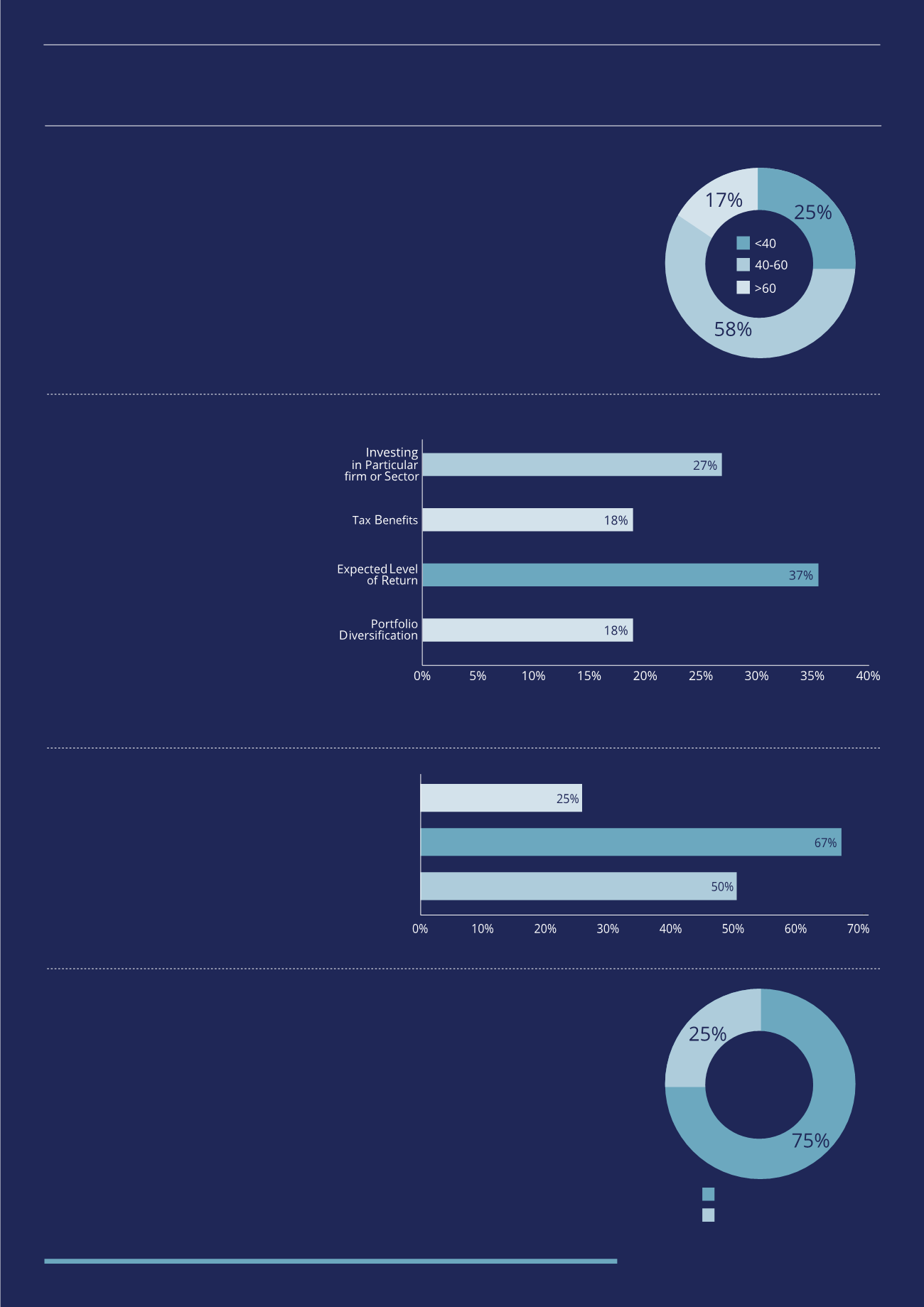
45
Q. What is your preferred EIS investment structure?
A. Those who have previously invested through the EIS were asked whether they preferred
investing in a discretionary managed fund, a single company EIS investment or both. A
discretionary managed fund will spread risk across several underlying EIS companies
and relies on the knowledge, experience and skill of the investment manager. Single
company investments are likely to require far more research and due diligence on the
part of the investor but will enable the investor to have complete control over which
companies receive their money. 75% of investors prefer single company EIS compared
to only a quarter who choose funds. As evidenced by their main objectives for EIS
investing, many investors value the ability to invest in a specific company or sector
of their choosing. Investing directly also removes an additional layer of charges.
“Private investor respondents view the expected level of return as the primary objective
when investing in EIS, with the tax benefits being much less important”
Q. What is your main objective
when investing, or considering
investing, in an EIS?
A. The expected level of returns was the
most popular choice among investors
and was cited by 37% as being their
main objective when considering an EIS
investment. This is in contrast to the
adviser survey, where tax benefits were
the primary consideration. Investing
into a specific firm or sector from an
angel point of view was chosen by 27% of
respondents as being their main objective
when investing. The EIS can provide a more
direct way for investors to get involved
with certain companies or sectors from a
very early stage. The extra benefits that EIS
investments can offer such as tax relief and
diversification are also seen as important
with 18% of respondents citing these.
Q. Which are your preferred
EIS investment strategies?
Please tick all that apply
A. Investors were asked to choose the
investment strategies that they prefer
and could pick more than one. The two
most popular investment strategies
were growth focused chosen by 67% of
respondents and exit focused chosen by
50%. These results mirrored advisers’
responses to the same question.
Q. Which age bracket do you come under?
A. The typical age of an EIS investor according to this survey is between 40-60 years old
with 58% of respondents falling within this age group. As EIS are generally higher risk
investments they are often not suitable for investors much older than the age of 60 who
are more focused on capital preservation rather than improved returns – although they
may consider EIS for potential Inheritance Tax relief. Younger investors below the age of
40 account for 25% of respondents. They may have more pressing financial goals such
as buying a house or starting a family and not have the capital available to allocate to
riskier EIS investments, although there are likely to be a number of high earners in this
category who can afford to take on the risks as they can supplement any losses with
future earnings. These results reflect the response advisers gave to this question.
Seed EIS
Growth Focus
Exit Focus
Single Company
Fund/Portfolio


